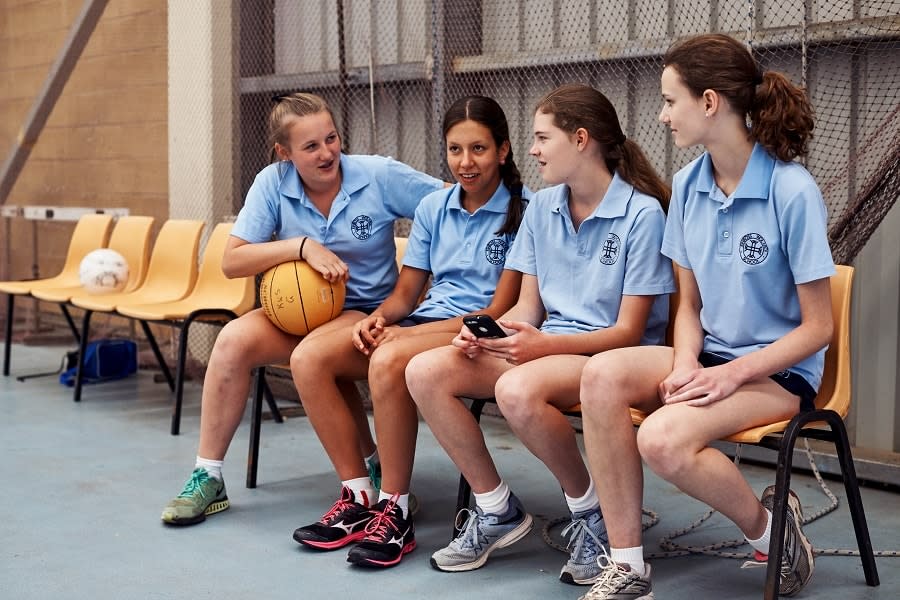Bully prevention initiatives led by students have a more positive and lasting effect than those led by ‘authority’ figures such as teachers, school counsellors and parents/carers. During this lesson, students will be engaged in whole-school action planning to promote respectful relationships within their school community.

Year level
7-10

Duration
60 minutes

Type
In class activity

SEL Competencies
Social awareness
Responsible decision-making
Relationship skills
Learning intention
Students will be able to engage in whole-school action planning to make a difference and to encourage and promote respectful relationships.
Key outcomes
By the end of the lesson, students will be able to:
understand key messages for raising awareness and changing bullying behaviour
develop different audience and communication strategies for promoting respectful relationships.
Materials needed
Butcher’s paper
Adhesive coloured dots
Web-enabled devices.
Mapped to
Australian Curriculum: Health and Physical Education
Refine protective behaviours and evaluate community resources to seek help for themselves and others (AC9HP8P08)
Plan and implement strategies, using health resources, to enhance their own and others’ health, safety, relationships and wellbeing (AC9HP8P10)
Plan, rehearse and evaluate strategies for managing situations where their own or others’ health, safety or wellbeing may be at risk (AC9HP10P08)
Plan, justify and critique strategies to enhance their own and others’ health, safety, relationships and wellbeing (AC9HP10P10)
Australian Curriculum: General Capabilities
Personal and Social Capability:
Social awareness
Social management
Ethical Understanding:
Responding to ethical issues
Critical thinking:
Generating
NSW PDHPE Syllabus
Examines and demonstrates the role help-seeking strategies and behaviours play in supporting themselves and others (PD4-2)
Investigates health practices, behaviours and resources to promote health, safety, wellbeing and physically active communities (PD4-7)
Plans for and participates in activities that encourage health and a lifetime of physical activity (PD4-8)
Victorian Curriculum: Health and Physical Education
Investigate the benefits of relationships and examine their impact on their own and others’ health and wellbeing (VCHPEP127)
Evaluate situations and propose appropriate emotional responses and then reflect on possible outcomes of different responses to health and wellbeing (VCHPEP147)
Plan, implement and critique strategies to enhance the health, safety and wellbeing of their communities (VCHPEP149)
Activity 1
Class vote: Bullying messages
15 minutes
Place around the classroom separate pieces of butcher’s paper with the following topic headings:
Recognising and responding to bullying behaviour
Assertive communication
Bystander behaviour
Helping a friend who is experiencing bullying
Where to go for help, support and advice.
Ask students to move around the room from poster to poster, recording key messages they recall about each topic.
Once all ideas are recorded, allocate students to each poster to group the messages and remove any duplicates.
Use a dot voting process to identify the five messages the class feels are most important for reducing bullying behaviour and promoting respectful relationships in their school community.
Dot voting process
Each student is given five coloured adhesive dots. They must use the dots to ‘vote’ for their selection. They can use their five dots individually to select five different options, or they can ‘pool’ their votes – for example, using all five dots for one option if they feel it’s the most important.
The options with the greatest number of votes are selected as the most important/relevant.
Activity 2
Investigation and application
45 minutes
Brainstorm as a class group the different ways students can communicate messages to the school community – for example, school newsletter, school website, video playing on the TV monitor in the front office, posters, school Facebook page.
Identify as a class group the different audiences within their school community – for example, students, staff members, parents and community members. Discuss whether the same message can be delivered in the same way to all of these audiences.
Divide the class into groups and allocate to each group one of the following five key messages:
recognising and responding to bullying behaviour
assertive communication
bystander behaviour
helping a friend who is experiencing bullying
where to go for help, support and advice.
Each group is to develop a campaign or product for communicating the key message to all of the audience groups in the school community. The campaign should provide practical strategies for dealing with bullying behaviour and demonstrate an understanding of the importance of developing positive, respectful relationships.
The campaign could take the form of a:
PowerPoint presentation
song
website
poem, short story or artwork
video
play
social media campaign.




